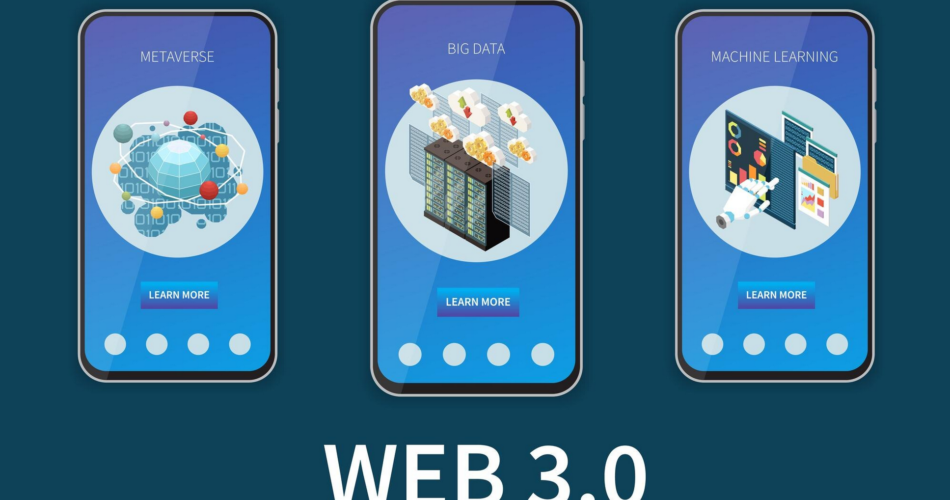If you’re looking for inspiration in web design, look no further than our top 20 web 3.0 design examples for the year 2024. These websites and applications showcase the latest advancements in web 3.0 architecture, development, and technologies, providing an exceptional user experience that pushes the boundaries of design trends in the digital realm.
With web 3.0 applications and websites, you can expect to see innovative layouts and cutting-edge features that provide an immersive experience for users. These applications and websites are designed to utilize web 3.0 features that enable seamless interactions, personalized content, and immersive experiences.
Web 3.0 design examples incorporate various technologies, such as artificial intelligence, augmented reality, virtual reality, voice recognition, voice cloning and blockchain integration, to create a truly futuristic experience. These cutting-edge features enable the development of a website or an application that is more interactive and entertaining, leading to improved engagement and overall satisfaction.
By exploring these web 3.0 design examples, you’ll gain insights into the future of web 3.0 design development and how these examples are pushing the boundaries of what is possible in the digital landscape. Stay updated with the latest web 3.0 design trends, techniques, and technologies in this exciting field.
Web 3.0 Design Examples Pushing Boundaries in User Experience
Are you ready to explore the power of web 3.0 in enhancing user experience? These web 3.0 design examples are revolutionizing the way users interact with websites and applications.
Personalized Content
Web 3.0 technologies enable websites and applications to create personalized content based on user preferences and behavior. This allows for a more engaging user experience, as users feel that the content is tailored to their needs. For example, Netflix uses AI algorithms to recommend movies and TV shows based on what a viewer has previously watched.
Seamless Interactions
Web 3.0 features such as Natural Language Processing (NLP) and chatbots allow for seamless interactions between users and websites/applications. Companies like The Home Depot use chatbots to assist customers with inquiries about products and services, creating a hassle-free shopping experience.
Immersive Experiences
Virtual Reality (VR) and Augmented Reality (AR) are increasingly being incorporated into web 3.0 design to provide immersive experiences for users. For instance, Adidas uses AR to enable customers to virtually try on sneakers before purchasing, enhancing the shopping experience.

Intuitive Navigation
Web 3.0 technologies also enable websites and applications to provide intuitive navigation for users. For instance, Airbnb uses machine learning algorithms to predict where users want to go next, making navigating the platform easier.
By incorporating web 3.0 features into design, these examples provide exceptional user experiences, pushing the boundaries of what is possible in the digital realm.
Stay Ahead of Web 3.0 Design Trends with Cutting-Edge Features
Web 3.0 design is all about pushing the limits and incorporating the latest technologies to create dynamic experiences. Here are some examples of cutting-edge features that are revolutionizing the web 3.0 design landscape:
Feature Description Web 3.0 Design Example Artificial Intelligence AI-powered chatbots and voice assistants provide personalized and efficient interactions Personalization with AI chatbot on a fashion website Augmented Reality AR overlays digital content onto the real world, enhancing user engagement and immersion AR try-on feature on a makeup brand’s website Virtual Reality VR lets users experience a completely digital environment, creating a fully immersive experience VR tour of a luxury hotel’s rooms and amenities Voice Recognition Voice-enabled devices and interfaces allow for hands-free interactions, providing convenience and accessibility Smart home control with voice commands on a home appliance website
These features not only enhance user experience but also cater to the changing needs and expectations of the modern consumer. By incorporating cutting-edge features into your web 3.0 designs, you can create a futuristic and dynamic experience that keeps your users engaged and satisfied.
Keep in mind that while these features are trending now, the web 3.0 landscape is constantly evolving. Stay up-to-date with the latest design trends and technologies to ensure your web 3.0 designs are always ahead of the curve.
Next-Level Web 3.0 Design Development and Architecture
You’ve already witnessed some impressive web 3.0 design examples that showcase the potential of this technology. Now, let’s take a look at the development and architecture aspects of web 3.0 that make these designs possible.
Web 3.0 Development
Web 3.0 development is all about building decentralized applications (dApps) that are not controlled by a single entity. This is where blockchain technology comes in, enabling the creation of trustless networks where users have complete control over their data and actions.
The examples of web 3.0 development are plenty. Take for instance the Brave browser that utilizes blockchain-based advertising, allowing users to earn cryptocurrency for browsing the web. The platform also integrates a decentralized payment system, which eliminates the need for intermediaries and ensures faster and cheaper transactions.
Web 3.0 Technologies
Web 3.0 technologies refer to the various tools and frameworks used in building web 3.0 applications. These include smart contracts, decentralized storage, and identity management protocols, among others.
One of the prominent web 3.0 technologies is the InterPlanetary File System (IPFS), a distributed system for storing and accessing files. Using IPFS, web 3.0 applications can leverage a decentralized storage system that is not controlled by any single entity.
Web 3.0 Architecture
Web 3.0 architecture is the foundation upon which web 3.0 applications are built. It comprises various components, including peer-to-peer networks, consensus mechanisms, and governance models.
A great example of web 3.0 architecture is the Ethereum blockchain, which provides a decentralized platform for building dApps. Ethereum allows developers to build smart contracts, which are self-executing programs that run on the blockchain and can automate various tasks.
In conclusion, web 3.0 design examples are only possible because of the advancements in web 3.0 development, technologies, and architecture. As this technology continues to evolve, we can expect more groundbreaking designs that take advantage of its unique features and capabilities.


